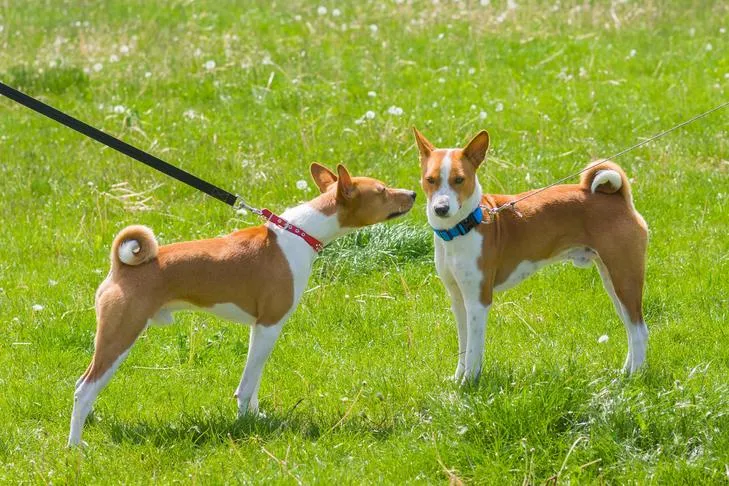Walking your dog should be an enjoyable experience for both of you, a chance for exercise and bonding. However, for many dog owners, the reality is often a struggle against a strong, determined dog dragging them down the street. Leash pulling is a common and frustrating behavior that can make walks less pleasant and even lead to injuries, especially with larger breeds. It’s not just an inconvenience; in most public areas, it’s unsafe and often against the law to have your dog off-leash, making proper leash etiquette essential for control and safety. If you’re wondering how to correct a dog that pulls on a leash, you’re not alone. The good news is that with consistent training and a few simple techniques, you can transform your walks from a battle of wills into a harmonious stroll. This guide will provide ten effective tips to help you teach your dog appropriate leash behavior, ensuring you and your furry friend can enjoy your time together.
1. Always Reward Good Leash Behavior
It’s easy to overlook good behavior, but positive reinforcement is crucial when teaching your dog not to pull on the leash. Dogs naturally repeat actions that result in a reward, whether it’s a tasty treat, verbal praise, or the opportunity to sniff an interesting scent. If you consistently ignore polite leash walking and only react when your dog pulls, they learn that pulling is the way to get your attention or achieve their desired outcome.
Make a conscious effort to acknowledge and reward your dog whenever they are walking nicely by your side with a loose leash. Carry high-value treats, offer enthusiastic praise, or provide gentle pets. Be generous with your rewards, especially in the initial stages of training. As your dog’s skills improve, you can gradually reduce the frequency of treats, substituting them with “life rewards” like the chance to sniff a tree or briefly greet another dog. This positive association will reinforce the desired behavior, showing your dog that walking politely is highly beneficial.
2. Never Let Your Dog Walk When They Are Pulling
One of the most fundamental principles of teaching your dog not to pull is to ensure that pulling never gets them what they want – which is to move forward. If your dog pulls and you continue to walk, you are inadvertently rewarding their pulling behavior. Dogs learn quickly through cause and effect. If pulling leads to progress, they will continue to pull.
To effectively correct this, the moment your dog begins to pull on the leash, stop immediately. Plant your feet firmly and do not move forward. Wait patiently for your dog to either return to your side or loosen the tension on the leash. This immediate cessation of forward movement communicates clearly that pulling is counterproductive.
3. Wait for a Loose Leash Before You Walk
The key to knowing when to resume walking after your dog has pulled is to wait for a “loose leash.” This means the leash should hang in a relaxed J-shape, indicating there is no tension. Additionally, wait for your dog to disengage from whatever was distracting them and turn their attention back to you.
Initially, this waiting period might feel long, and your dog might be confused. However, they will eventually look back to see why you’ve stopped. The instant you see that slack leash and your dog looks at you, offer praise and a treat right at your side. Then, calmly continue the walk. You might find yourself stopping and starting every few steps at first, but your dog will quickly learn that a relaxed leash allows the walk to continue, while pulling brings everything to a halt. This consistent application of the “stop-and-go” method is a highly effective way [How To Correct A Dog That Pulls On A Leash].
 Basenjis meeting in a field outdoors, one on leash.
Basenjis meeting in a field outdoors, one on leash.
4. Incorporate Life Rewards on Your Walk
Walks are more than just bathroom breaks; they should be enriching experiences that provide physical exercise and mental stimulation for your dog. While you are actively training your dog not to pull, it might seem like their walks are less engaging. However, you can enhance both the training and the enjoyment by incorporating “life rewards.” These are everyday things your dog naturally enjoys, such as the chance to sniff a patch of grass, investigate a bush, or briefly greet a friendly person.
For instance, if your dog walks politely for a certain distance (e.g., 10 feet) without pulling, reward them by allowing a few minutes of sniffing time. These bonus rewards reinforce the idea that good behavior leads to desirable outcomes, making your dog more inclined to walk politely. This strategy not only motivates your dog but also enriches their walking experience, demonstrating that basic dog obedience classes near me principles apply even to casual strolls.
5. Walk at a Good Pace
Humans often walk at a much slower pace than dogs would naturally prefer, even small breeds can have surprisingly fast gaits. This discrepancy in pace is a common reason why dogs pull – they want to move faster and explore. To mitigate this, try to find a walking pace that is comfortable for both you and your dog.
While you can train your dog to match your speed, during the initial stages of correcting leash pulling, a quicker, more purposeful pace can actually make it easier for them. A brisk walk keeps your dog more engaged and provides less opportunity for them to dawdle or get distracted, which can lead to pulling. Adjusting your speed is a simple yet effective technique to help your dog maintain a loose leash.
6. Be Consistent With Your No-Pulling Rule
Consistency is paramount in dog training. It can be incredibly tempting to let your dog pull occasionally, especially when you’re in a hurry, it’s cold outside, or you just want to get to your destination quickly. However, every single time you allow your dog to pull, you are reinforcing the unwanted behavior and setting your training back significantly.
To effectively teach your dog [how to correct a dog that pulls on a leash], you must be unwavering with your no-pulling rule in every situation. Until your dog consistently walks with a loose leash for extended periods, prioritize training time over destination. If you’re pressed for time, consider letting your dog relieve themselves in the yard or at the curb, saving the actual “walk” for dedicated training sessions where you can fully commit to the no-pulling rule. This unwavering consistency is vital for your dog to understand the new expectations.
 Beagle pulling on the leash to sniff while on a walk outdoors.
Beagle pulling on the leash to sniff while on a walk outdoors.
7. Keep Training Sessions Short and Fun
Working with a dog that is determined to pull can be a challenging and frustrating experience for both of you. It’s easy to get discouraged if you feel like you’re not making progress, or if your walks are barely extending beyond your driveway. To prevent burnout and ensure a positive learning environment, keep your training sessions short, frequent, and enjoyable.
Dogs, especially puppies, have relatively short attention spans. Asking too much too soon can lead to frustration and diminish their willingness to learn. Instead of focusing on covering a certain distance, concentrate on achieving a loose leash, even if it’s only for a few steps. End each session on a positive note, celebrating small successes. This approach keeps your dog engaged and eager for the next training opportunity, making the process of [how to correct a dog that pulls on a leash] much more effective.
8. Be Interesting and Engaging on Walks
For a dog, the world is a sensory wonderland filled with captivating sights, sounds, and especially smells. These external stimuli are powerful distractions that can easily entice your dog to pull you in their direction. If you are disengaged, perhaps preoccupied with your phone, your dog has little incentive to pay attention to you.
To counteract these distractions, you need to become the most interesting thing on the walk. Talk to your dog, offer unexpected treats, take quick breaks for a mini-training game, or simply change direction frequently. By being unpredictable and engaging, you keep your dog’s attention focused on you, making them more likely to follow your lead rather than drag you towards every squirrel or interesting scent. This also applies when considering how to stop dog barking at nothing – engagement is key.
 Cavalier King Charles Spaniel on a lead outdoors.
Cavalier King Charles Spaniel on a lead outdoors.
9. Stay Calm
Walks can present a variety of emotionally charged situations, from encountering another dog to seeing a beloved neighbor or facing something your dog finds frightening. In these moments, it’s vital for you, the handler, to remain calm and composed. Dogs are incredibly adept at reading human emotions, and your stress or excitement can easily transmit down the leash, either escalating your dog’s excitement or intensifying their anxiety.
To help your dog navigate these situations calmly, project a calm demeanor yourself. Your relaxed state can reassure your dog that there’s nothing to be overly excited or fearful about. A calm dog is far more likely to listen to your cues and behave appropriately. By controlling your own emotions, you create a more stable and predictable environment for your dog, making it easier for them to learn and adhere to proper leash manners, a crucial part of knowing [how to correct a dog that pulls on a leash].
10. Engage Your Dog In Distracting Situations
Distractions are the ultimate test of leash manners. Whether it’s the sight of other dogs, the allure of a squirrel, or the nervousness caused by strangers, your dog’s training can quickly go out the window as they pull to approach or retreat.
To manage these situations, proactively engage your dog before they become fully fixated on the distraction. Get their attention focused on you. Calmly offer high-value treats, ask for a simple command like “sit” or a “hand target,” or play a quick “watch me” game to establish eye contact. These simple exercises are easy for your dog to perform and help them remain engaged with you as the distraction passes. The goal is to redirect their attention to you before they even notice the distraction, or at least before they react strongly to it. This proactive approach reinforces that staying focused on you is rewarding, even in the most exciting or nerve-wracking environments.
Mastering how to correct a dog that pulls on a leash requires patience, consistency, and a positive approach. By implementing these ten tips, you can transform your walks into enjoyable, stress-free experiences for both you and your canine companion. Remember, every dog is an individual, so be flexible, observe your dog’s responses, and adjust your training methods as needed. With dedication, you’ll soon be walking side-by-side with a well-behaved dog, strengthening your bond and making every outing a pleasure. If you’re looking for further resources or expert advice on various training challenges, don’t hesitate to explore additional training guides and resources available to help you on your journey.
